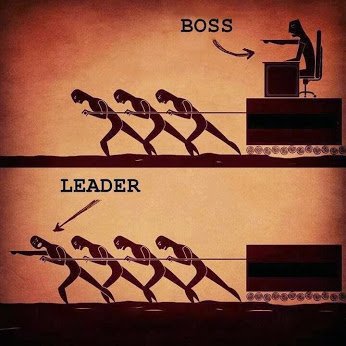Revolutionizing PR ------- How ChatGPT is Changing the Game
Carmen Hughes
When ChatGPT debuted, it literally stopped the internet. Developed by OpenAI, GPT (Generative Pre-trained Transformer) is a machine learning model that uses a transformer neural network to generate natural language text. According to OpenAI, ChatGPT has had more than 1 million users since its debut within a few days of its launch on November 30, 2022. Fifteen days later, more than two million users were already testing OpenAI’s service. People everywhere were sharing their results on Twitter, LinkedIn and other channels. Everyone was awed at how ChatGPT produced movie scripts, songs, poems, programming scripts and so much more in seconds.
Professionals and industries alike are now asking the same question: how will these new artificial intelligence tools affect or enhance their job or company? With the rapid pace of AI tools entering the market, a new world of efficiency and creativity is being unleashed, full of uncertainties.
How Can Public Relations Harness ChatGPT?
Indeed, it's a brave new world, and many are jumping in to test and discover how they can apply ChatGPT to their profession. So how can public relations professionals, content marketers, and PR consultants use ChatGPT?
PR Needs to Know the Capabilities and Limitations of ChatGPT and GPT-3
In the public relations field, there are many ways that ChatGPT can help automate some of the work done on behalf of clients. Before we explore further, it's essential to know that ChatGPT is still in its infancy and is currently limited in what it can and can't do. OpenAI has a helpful ChatGPT FAQ that marketers and PR professionals should review. With its arrival, communications professionals must plan how to adopt it. Here are some tips for how PR professionals can use ChatGPT.
Tips for How PR Can Use ChatGPT
It's essential to ensure full transparency about how the PR agency and account teams will use ChatGPT, GPT-3, GPT-4, LaMDA, PaLM, etc., and how they may use other AI tools for their clients' accounts. Communications professionals should share with clients how ChatGPT can add value and efficiency. PR should also communicate with clients how ChatGPT may be used in developing materials or doing other outreach (i.e., speaking abstracts, award submissions, case studies, press materials, etc.).
It’s also important to maintain data privacy and security. This step is critical for PR agencies and communication consultants, typically under a non-disclosure agreement. PR professionals and content marketing consultants should inform clients about how they will conduct research using ChatGPT and other AI models and how the confidentiality of their sensitive data will continue to be protected. PR agencies, content marketing writers, and consultants must be careful about the detail they feed into ChatGPT, whether for research or content development. Sensitive data and information should only be shared or fed into ChatGPT, OpenAI's GPT model, or any other AI model with the client's advanced knowledge.
Harness ChatGPT and GPT Models to Automate Repetitive Tasks and Do Research
We began testing GPT-3 last summer and were blown away at its ability to research various topics instantly. PR professionals will be amazed at how useful these AI tools deliver another fresh perspective across multiple programs and projects. A subset of examples include:messaging
SWOT analysis and industry overviews
identify trends and opportunities that map to your client’s business sector
key messages for target personas
email subject lines
article titles
art image generation via OpenAI’s Dall-e AI tool or other generative AI tools
condense long-form research or reports
rapid research
report generation
keyword extraction and keyword list generation
Use AI tools to Enhance PR’s creativity: ChatGPT and OpenAI’s GPT models can assist PR agencies in generating new ideas, identifying trends, and providing insights, which help inform and guide the creative process. The sky's the limit on how helpful ChatGPT can be in delivering many creative ideas based on your specific queries.
Do you need a better company tagline? ✔
Do you want novel ideas to break through the noise at a big trade show? ✔
Do you seek novel ideas for a company event that will capture attention? ✔
ChatGPT isn’t a magic wand. Public relations needs to uplevel how to add value.
Since ChatGPT is so new and GPT-3 is evolving to GPT-4, keep in mind that these AI tools are not magic wands. Efficiency and speed are always valued but not at the expense of content that contains errors. OpenAI informs users that the findings are only sometimes accurate. For example, applying ChatGPT or GPT-3 to provide a list of client competitors may be way off or results for a list reporters are likely to contain some errors. While ChatGPT may deliver you a list or research at blazing speed, the resulting information may contain a high error rate! Therefore, PR professionals need to use other tools to research and develop lists or findings that are current and accurate.Ethical Practices that PR should Remember when using ChatGPT
ChatGPT can't search the internet in real-time and is limited to information and events beyond 2021. Its neural network ML model pulls information fed to it and then generates natural language text. While it's unlikely that content from ChatGPT will be plagiarized, it's important to remember that the model's output could resemble already published text. Therefore, communication professionals must ensure that any generated writing is unique and plagiarism-free. PR firms and in-house PR staff should check, revise, and edit the final product for accuracy, relevancy, and adherence to standards (i.e., avoid plagiarism, hate speech, etc.).
Additionally, ChatGPT and OpenAI’s GPT model often provide hyperlinks to incorrect sources or titles of reports and papers that don’t exist on the web—as such, fact-checking the research and statistics is essential. Other ChatGPT-like tools can access the web in real-time, but they also often produce plagiarized content. To ensure originality, take the time to research and make the content your own and of the highest quality. Improve your content by introducing relevant stats, expert opinions, data findings, graphics, etc.
Enter the Centaur: Man + Machine Can Surpass AI and produce better results
In Kevin Kelly's book, "The Inevitable," he introduces the concept of a "centaur," which is a team of AI and human experts working together. Centaurs have become the best chess players in the world, combining their skills to become unbeatable. In 2016, when AlphaGo, an AI system developed by DeepMind, beat Lee Sedol, the world's best Go player, it was a defining moment. This event marked a turning point, concluding that a "man plus machine" approach will ultimately yield better results than a computer operating alone. This conclusion is also true for AI tools: human intelligence combined with AI will outperform an AI system working independently. After all, humans can still outperform AI in many areas, including strategy, problem-solving, collaboration, public speaking, etc.
The automation and efficiency that AI is delivering will disintermediate many jobs and skill sets. There are many skills that PR professionals have that an AI tool or bot can't automate, such as high-quality writing, communicating with the press, building relationships and contacts, event ideation, surveys, onsite work at events and trade shows, etc. PR professionals should continue to apply their skills in preparing high-quality communications materials, from news announcements to media pitch letters. Refrain from using ChatGPT to do your job; Google, GTPZero and others are introducing technology and tools to determine whether the content is human or AI-generated.
In conclusion, now is the time for PR agencies and PR professionals to develop internal processes and boundaries for how they will adopt AI tools. For many professions, from PR to programming, this disruptive technology can be seen as a challenge – but also an opportunity. To take advantage of the potential of AI, professionals must evolve their skill sets to become more like centaurs: blending human and AI capabilities to create the best outcomes.










